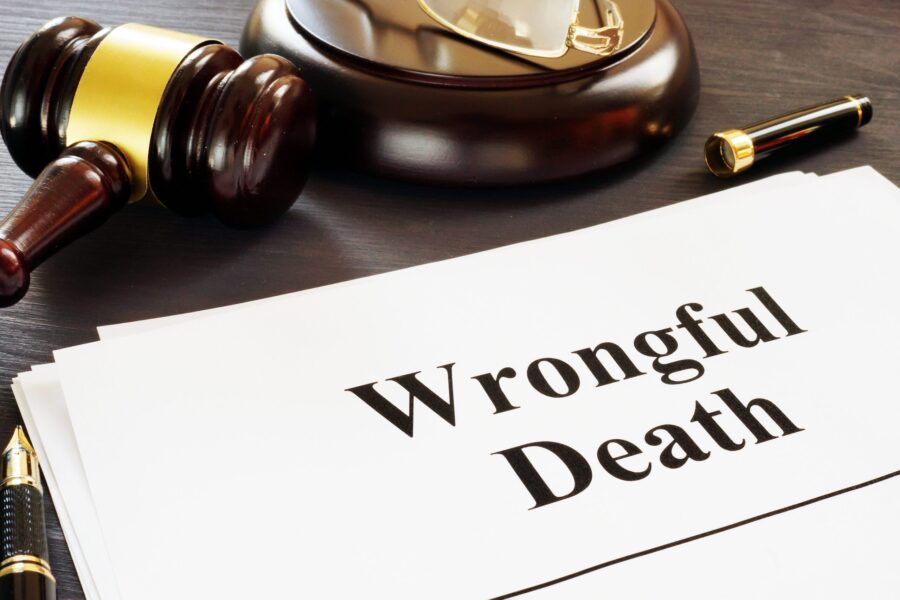

Proving Negligence in a Wrongful Death Case: Key Considerations
Wrongful death cases are some of the most heartbreaking and complex legal battles a person can face. When a loved one’s death is caused by the negligence, wrongdoing, or inaction of another, the family may be entitled to compensation. However, the path to justice is often fraught with legal intricacies that demand a thorough understanding of how to prove negligence. In this blog, we will explore the key steps, considerations, and challenges involved in proving negligence in a wrongful death case.
Understanding Negligence in Wrongful Death
Before we venture into the depths of wrongful death litigation, it’s essential to understand what negligence means in the context of the law. Negligence occurs when a person’s behavior falls below the standard of care recognized by the law; this can entail action or inaction that causes an unreasonable risk of harm to others. In wrongful death, negligence is the linchpin on which the entire case pivots.
Elements Required to Prove Negligence
To establish negligence, the plaintiff, who is usually a surviving family member, must demonstrate four key elements:
- Duty of Care: The at-fault party must owe a duty of care to the deceased. This is a legal obligation to avoid causing harm through their actions or failure to act.
- Breach of Duty: It must be shown that the at-fault party breached their duty by failing to fulfill reasonable standards. This breach is a departure from what a rational person would consider correct.
- Causation: The breach of duty directly caused the death. Proximate cause, or legal cause, must be demonstrated, meaning that the death was a foreseeable consequence of the defendant’s actions.
- Damages: Lastly, there must be actual damages, meaning that the wrongful death led to measurable losses such as funeral expenses, lost wages, and the loss of companionship.
Key Considerations in Proving Negligence
Proving negligence isn’t about pointing fingers; it’s about constructing a compelling narrative supported by incontrovertible evidence.
Gathering Evidence and Documentation
One of the first tasks in a wrongful death case is to gather all possible evidence. This includes police reports, medical records, witness statements, and any available photographic or video evidence. Conducting a thorough investigation is crucial; the more evidence you have, the stronger your case.
Expert Testimonies and Analysis
Complex cases often mandate expert testimony. Professionals in relevant fields, such as medical practitioners, accident reconstruction specialists, or forensic psychologists, can provide nuanced analysis that supports the claim of negligence.
Establishing Causation
Proximate cause is a legal term that links a defendant’s wrongful actions with a plaintiff’s injuries. Wrongful death cases often involve proving not just that the defendant engaged in negligent behavior, but that this behavior directly resulted in the death.
Demonstrating Breach of Duty
Proving a breach of duty requires a comparison between the defendant’s actions and the standard of reasonable care. This can be a subjective undertaking, and it will require a detailed breakdown and examination of the events leading to the death.
Legal Process and Challenges
Navigating the legal process of a wrongful death case is no small feat. Each step, from filing the claim to potential settlement or litigation, is fraught with complex procedures and deadlines.
Overview of the Legal Steps
The path begins with filing a claim, potentially followed by a discovery phase where both parties exchange information, and then can lead to settlement negotiations or trial. Each step has its own set of protocols and potential hurdles.
Common Challenges Faced in Proving Negligence
Challenges often present themselves in the gathering of evidence, particularly if the circumstances of the death are ambiguous or if the responsible party is attempting to evade liability. Additionally, statutes of limitations can limit the amount of time you have to file a claim.
Importance of Legal Representation
In a wrongful death case, the importance of legal representation cannot be overstated. An experienced wrongful death attorney offers expertise, resources, and a network of professionals that can significantly bolster your case.
The Role of an Attorney
An attorney will guide you through the process, ensure your rights are protected, and fight for the compensation you and your family deserve.
How Legal Counsel Can Assist in Proving Negligence Effectively
Lawyers can select the most convincing evidence, prepare compelling arguments, and leverage their understanding of the law to help prove the four elements of negligence.
Conclusion
Proving negligence in a wrongful death case is no small task, but with the right approach and the best legal counsel by your side, it is possible to build a case with a strong foundation. Starting with a solid understanding of the elements required to prove negligence and the importance of thorough preparation and representation, you put yourself in the best position to honor your loved one’s memory with a successful legal outcome. Remember, in times such as these, legal guidance is not just an asset – it is a necessary ally in the quest for justice.
If you find yourself in the solemn position of needing legal representation following a wrongful death, your next step is crucial. Don’t delay in reaching out to Mihelich & Kavanaugh, PLC, for a consultation. Their team of skilled attorneys is dedicated to helping families like yours seek justice and secure the financial recovery you are entitled to.






